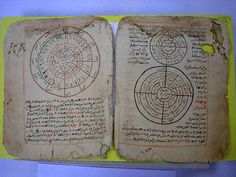

In seeking to understand the plurality of engagements that Muslims from diverse communities of interpretation and from different parts of sub-Saharan Africa have had with Qur’an, this volume adds to the scholarship on the Qur’an as well as the scholarship on Islam and Muslims in Africa. In a new lecture series organised by Caroline Macé and Eva Wilden, lecturers from CSMC and the Göttinger Akademie der Wissenschaften will examine the specific problems posed by multilingual manuscript or epigraphic traditions, for which an adequate methodology needs to be designed. The volume covers textual culture (manuscripts, commentaries and translations) aural and oral culture (recitations and invocations, music and poetry) the lived experience (magic squares and symbolic repertoire, medicinal and curative acts, healing and prayer, dreams and spirit worlds) material culture (textiles, ink, paper, and wooden boards) and education. The Correspondence of Franz Rosenzweig, Martin Buber, and Margarete Susman. This volume moves well beyond the materiality of the Qur’an as a physical book to explore the ways in which it is understood, felt and imagined, and to examine the contestations and debates that arise from these diverse engagements. Cluster of Excellence Understanding Written Artefacts (UWA) (2019-2025) Research Associate in project RFE10 (2020-2023): Wandering Artefacts: The Materialistic History of German-Jewish Archives.

They explore a variety of media and modalities that Muslims in sub-Saharan Africa, as elsewhere, use in their engagements with the Qur’an. The book’s twelve case studies use different frameworks and methodological approaches from the academic disciplines of anthropology, art history, historiography and philology. Covering a period from the twelfth/eighteenth century to the early twenty-first century, this multidisciplinary volume examines a variety of geographical locations in sub-Saharan Africa including Burkina Faso, Kenya, Mali, Niger, Nigeria, Senegal, and Tanzania. This work aims to open up new discourses about Islam in sub-Saharan Africa through the examination of how Muslims in this geographical and socio-cultural context have engaged with the Qur’an. The paper presents the project Safeguarding the manuscripts of Timbuktu coordinated by the Centre for the Study of Manuscript Cultures (CSMC), University of Hamburg.


 0 kommentar(er)
0 kommentar(er)
